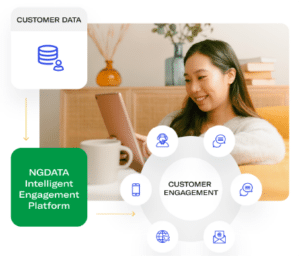Customer touchpoints are the places where customers interact with your brand, including your website, online ads, ratings, reviews, and your customer service department, among other points of contact with your brand. These interactions often change how customers perceive a brand, product, business, or service.
It only sometimes means physical interaction, such as when consumers discover online reviews of your brand or product. Your brand is a story unfolding across all customer touchpoints.
To leverage points of contact with your audience, you must first know more about them, including the interactions and where they occur. Armed with this information, you can measure results and make improvements to facilitate a better customer experience across every touchpoint. Remember that some touchpoints are out of a company’s control, mainly as consumers write online reviews and reach out to companies on public social media platforms. Identifying these pivotal moments is the first step in developing customer journey maps and boosting customer satisfaction at every stage of the buyer’s journey. Here’s how:
- Put Yourself in the Customer’s Shoes
- Use Customer Journey Maps and Customer Experience Maps
- Categorize Your Customer Touchpoints
Continue reading to learn more about each step for finding customer touchpoints and improving your interactions with customers.
Put Yourself in the Customer’s Shoes
You must put yourself in the customer’s shoes to identify customer touchpoints. As you create personas, you must get inside your customers’ heads. Survey Monkey recommends asking yourself a few questions about where you go and how you get there when you…
… have a problem that needs to be solved?
… discover the product or business that can solve the problem?
… make your purchase decision?
… encounter the business after the purchase?
Put yourself on the customer’s journey and consider all the touchpoints at each stage. Then, you can get customer feedback through a survey to ensure that your perceived experience aligns with customers’ actual experiences.
Use Customer Journey Maps and Customer Experience Maps
Mapping the customer journey goes hand-in-hand with putting yourself in the customer’s shoes. While customer journey maps are essential tools, mainly because they outline touchpoints consumers experience from pre-sale to post-sale interactions, customer experience maps go even further by analyzing the entire customer experience with a brand. Customer journey maps are more linear than customer experience maps since CX maps analyze behavior and interactions across touchpoints and channels and help marketers see the path various target customers take when interacting with your brand. CX maps organize each potential interaction consumers have with brands throughout the entire journey and take into account human behavior in context.

So, which should you use? The answer is both because each is a valuable tool in certain situations.
- When to use customer journey maps – Customer journey maps are the better choice when you focus on specific paths like the buying journey or one target customer for a particular product or service. Customer journey maps focus on mapping the touchpoints of a specific customer from the first interaction to post-sale.
- When to use customer experience maps – Customer experience maps are better suited to uncovering why customers don’t have the best experience possible. These maps give you a better visualization of the entire customer journey. Customer experience maps also lend themselves better to mapping the omnichannel experience and understanding interactions across channels.
Remember to have a complete inventory of your touchpoints, including your website, social media platforms, traditional and digital advertising, telephone, physical locations, direct mail, and invoices and receipts to effectively map the customer experience. It’s also helpful to determine those interactions’ purposes and categorize them, which we explore in the next step.
Categorize Your Customer Touchpoints
Categorize touchpoints after mapping the customer journey and customer experience. They typically fall into four categories, but companies should modify their categories as needed.
- Products – This category is fairly open-ended. Your products may include hardware, software, services, and your website if it is central to all aspects of your business. In cases where your website is a marketing tool, classify it as a message.
- Interactions – Richardson encourages you to put touchpoints that involve two-way interactions in this category. They may be in-person, on the phone, or virtual.
- Messages – Messages are one-way communications, including brand, collateral, manuals, advertising, packaging, and so on. Any interaction that establishes the brand voice and explains complex products to first-time users falls under the message’s category.
- Settings – Consider the settings to be the places where products are seen or used, for example, retail stores, television product placement, events, or shows. Companies often have little control over how products are presented, so touchpoints in this category are difficult to manage.
You must first identify your customer touchpoint before you can completely understand them, their journeys, or their experiences. Because they occur before, during, and after a sale, you must consider your customers’ entire journey to identify all interactions. You can achieve this by putting yourself in the customer’s shoes, mapping the customer journey and experience, and categorizing all possible touchpoints.

An Advanced CDP to Identify Customer Touchpoints
The Intelligent Engagement Platform helps you gain a 360-degree understanding of every individual customer. Customer journey orchestration leverages this multi-dimensional data to bring together customer conversations and journeys across all touchpoints – helping your business deliver the most holistic and considered customer experience.





